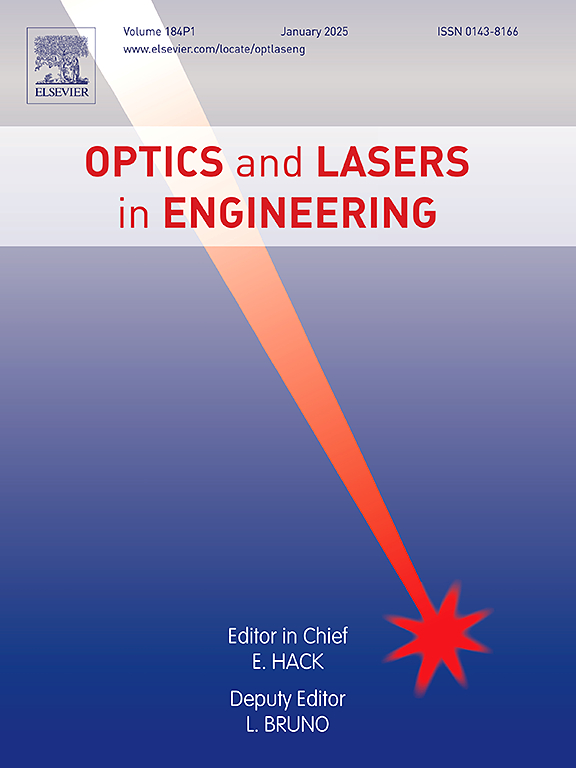Feasibility of underwater true color three-dimensional imaging using hyperspectral LiDAR
IF 3.7
2区 工程技术
Q2 OPTICS
引用次数: 0
Abstract
Hyperspectral LiDAR (HSL) has the advantage of integrating spatial and spectral detection and has become a new direction for underwater three-dimensional (3D) imaging. However, underwater HSL may encounter color distortion caused by the wavelength-selective attenuation property of the water medium. In order to address this problem, we propose the underwater target spectral radiometric correction (UWSRC) method. This method leverages the advantage of LiDAR in the acquisition of the ranging information for each point of the target. Based on the assumption of consistent water transmittance along the laser transmission path, the spectral transmittance of water at each point can be accurately calculated according to the ranging data. Then each point’s spectral reflectance can be corrected, achieving true color reconstruction of 3D point clouds of underwater targets. In order to assess the feasibility of the proposed method, we built a underwater virtual active HSL system to conduct underwater 3D imaging experiments in turbid water environment. The results indicate that the fidelity of the reconstructed colors is significantly improved, and the ranging accuracy has reached millimeter-level. This method can be easily applied to underwater true-color 3D imaging based on HSL and is also expected to be applied to true-color 3D imaging restoration in other transmission medium.
高光谱激光雷达水下真彩色三维成像的可行性
高光谱激光雷达(HSL)具有空间探测和光谱探测相结合的优势,已成为水下三维成像的新方向。然而,由于水介质的波长选择性衰减特性,水下HSL可能会出现颜色失真。为了解决这一问题,我们提出了水下目标光谱辐射校正(UWSRC)方法。该方法利用了激光雷达在获取目标每个点的测距信息方面的优势。在假设水在激光传输路径上的透过率一致的前提下,根据测距数据可以精确计算出各点处水的光谱透过率。然后对各点的光谱反射率进行校正,实现水下目标三维点云的真彩重建。为了验证所提方法的可行性,我们搭建了一个水下虚拟有源HSL系统,在浑浊水环境下进行水下三维成像实验。结果表明,重构颜色的保真度有了明显提高,测距精度达到毫米级。该方法易于应用于基于HSL的水下真彩色三维成像,也有望应用于其他传输介质下的真彩色三维成像恢复。
本文章由计算机程序翻译,如有差异,请以英文原文为准。
求助全文
约1分钟内获得全文
求助全文
来源期刊

Optics and Lasers in Engineering
工程技术-光学
CiteScore
8.90
自引率
8.70%
发文量
384
审稿时长
42 days
期刊介绍:
Optics and Lasers in Engineering aims at providing an international forum for the interchange of information on the development of optical techniques and laser technology in engineering. Emphasis is placed on contributions targeted at the practical use of methods and devices, the development and enhancement of solutions and new theoretical concepts for experimental methods.
Optics and Lasers in Engineering reflects the main areas in which optical methods are being used and developed for an engineering environment. Manuscripts should offer clear evidence of novelty and significance. Papers focusing on parameter optimization or computational issues are not suitable. Similarly, papers focussed on an application rather than the optical method fall outside the journal''s scope. The scope of the journal is defined to include the following:
-Optical Metrology-
Optical Methods for 3D visualization and virtual engineering-
Optical Techniques for Microsystems-
Imaging, Microscopy and Adaptive Optics-
Computational Imaging-
Laser methods in manufacturing-
Integrated optical and photonic sensors-
Optics and Photonics in Life Science-
Hyperspectral and spectroscopic methods-
Infrared and Terahertz techniques
 求助内容:
求助内容: 应助结果提醒方式:
应助结果提醒方式:


